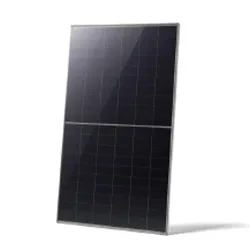Advancements and Benefits of Bifacial Photovoltaic Panels in Renewable Energy Systems
Bifacial Photovoltaic Panels Harnessing the Sun from Both Sides
In recent years, the solar energy industry has witnessed significant advancements, one of which is the rise of bifacial photovoltaic (PV) panels. This innovative technology captures sunlight from both the front and rear sides of the solar modules, maximizing energy generation. This article explores the principles behind bifacial solar panels, their advantages, and the factors influencing their adoption in the renewable energy landscape.
What Are Bifacial Photovoltaic Panels?
Bifacial PV panels are designed to gather solar energy on both sides. Unlike traditional monofacial panels that only capture sunlight from the front, bifacial panels utilize transparent back sheets, allowing light to pass through and be absorbed by the solar cells located on the rear side. This design is particularly effective in environments with high albedo, where light is reflected from surfaces such as sand, snow, or concrete, thereby enhancing the overall energy yield.
Advantages of Bifacial Solar Technology
1. Increased Energy Generation One of the primary benefits of bifacial panels is their ability to produce more electricity than traditional panels. Studies have shown that bifacial panels can increase energy output by 10% to 30%, depending on the installation's location and conditions. The dual exposure to sunlight helps maximize the energy captured throughout the day, resulting in higher overall efficiency.
2. Enhanced Performance in Various Environments Bifacial panels shine particularly in regions where reflective surfaces abound. For example, installations in snow-covered areas or near bodies of water can experience higher-than-average gains as sunlight reflects off these surfaces, further increasing the energy generated. Unlike standard panels, bifacial technology can be beneficial in a wide range of geographical conditions.
3. Durability and Longevity Bifacial panels are often built with robust materials, making them more resilient to environmental challenges such as shading, dirt accumulation, and degradation. The use of high-quality materials in the manufacturing process contributes to a longer lifespan and lower maintenance requirements, providing a more reliable return on investment for solar energy projects.
bifacial photovoltaic panels

4. Versatile Installation Options Bifacial panels can be adapted to various installation types, including fixed tilt, ground-mounted, and even vertical configurations. Their ability to capture sunlight from multiple angles offers flexibility in design, making them suitable for various applications, from utility-scale solar farms to urban rooftops.
Factors Influencing Adoption
Despite their clear advantages, bifacial PV panels face several challenges that influence their widespread adoption
1. Higher Initial Costs The upfront cost of bifacial panels is generally higher than traditional PV panels. While the increase in energy yield can offset these costs over time, the initial investment may deter some potential buyers. However, as production increases and technology advances, prices are expected to decrease.
2. System Design Complexity Implementing bifacial technology requires careful planning and design consideration. Factors such as the installation's tilt angle, elevation, and the reflective properties of the surrounding environment must be optimized to achieve the best results. This added complexity can pose a challenge for developers and installers.
3. Performance Monitoring To maximize the benefits of bifacial panels, sophisticated monitoring systems must be employed to assess performance and energy output accurately. Understanding how the panels perform under varying conditions is crucial for optimizing their use in different settings.
Conclusion
Bifacial photovoltaic panels represent a significant evolution in solar technology, offering a promising path to increased energy generation and efficiency. Their ability to harness sunlight from both sides makes them an attractive option for a diverse range of installations, particularly in reflective environments. While challenges such as higher initial costs and design complexity exist, the ongoing advancements in technology and manufacturing processes are likely to enhance their popularity and accessibility. As the world continues to move toward renewable energy solutions, bifacial PV panels will undoubtedly play a crucial role in shaping the future of solar power.
-
Unlocking Energy Freedom with the Off Grid Solar InverterNewsJun.06,2025
-
Unlock More Solar Power with a High-Efficiency Bifacial Solar PanelNewsJun.06,2025
-
Power Your Future with High-Efficiency Monocrystalline Solar PanelsNewsJun.06,2025
-
Next-Gen Solar Power Starts with Micro Solar InvertersNewsJun.06,2025
-
Harnessing Peak Efficiency with the On Grid Solar InverterNewsJun.06,2025
-
Discover Unmatched Efficiency with the Latest String Solar InverterNewsJun.06,2025







